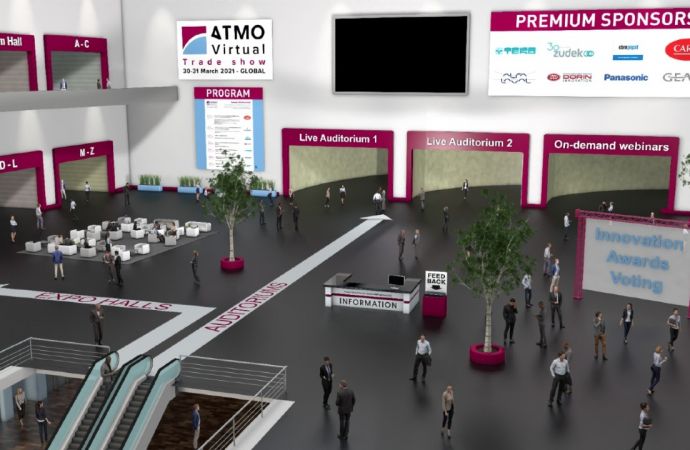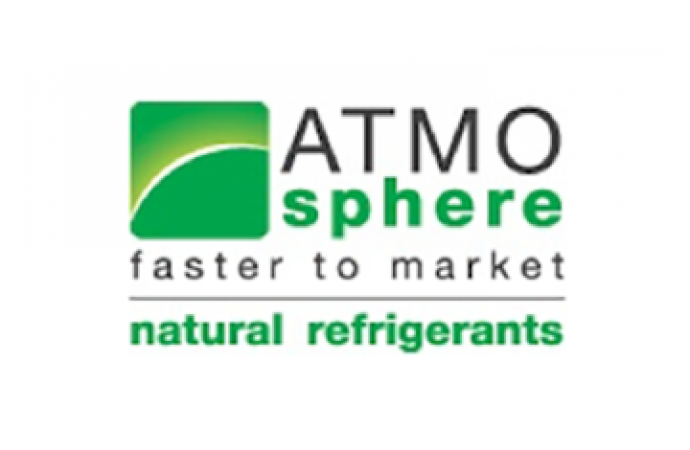The state of the natural refrigerant industry and emerging trends were addressed at this year’s ATMOsphere America, organised in Atlanta from 25-26 June, with two separate sessions gathering stakeholder evaluations of the current market for CO2, ammonia and hydrocarbons in the U.S., Canada and Mexico.

In the midst of policy changes at both a global and national level affecting f-gases, the HVAC&R industry is looking closely at which applications suit which natural refrigerants. The use of different solutions in all major application areas shows the high level of innovation in this area. Developments across a whole range of end uses were presented during two sessions of the first day of ATMOsphere America 2015, indicative of a growing confidence across the board in natural refrigerant technology. Alongside the views presented by the system and component suppliers, several end-users confirmed plans to push their roll-outs of natural refrigerants-based equipment.
More end-users looking to expand their use of natural refrigerants
The market opportunities session gave companies from all sectors an opportunity to outline where they and their market will be heading. Harrison Horning, Director of Energy and Facility Services for Delhaize America, noted how they would continue to introduce CO2-based equipment by making it a standard in northern climates. Harrison encouraged the entire industry to push boundaries saying: “Let’s go to the moon”.
Roy Buchert, McDonald’s Global Energy Director, spoke of their desire to replicate the European roll-out of hydrocarbon-based equipment across the U.S and encouraged the same for the entire food service industry which has nearly 1 million restaurants across the U.S. He stated that equipment was being readied for their McDonald’s restaurants across the U.S. in light of the expected EPA delisting of certain fluorinated refrigerants, proclaiming that:
Bruce Karas, Vice President of Environment & Sustainability for Coca Cola North America, focused on the importance of their “point of sale” equipment and how the use of CO2 allows the company to spread their message of environmental responsibility. Speaking on the topic of naturals in general he urged those in power to listen:
John Scherer, Manager of Engineering at Los Angeles Cold Storage, was the first speaker to address the radical changes on-going in the industrial refrigeration sector. Scherer noted that the recent sweep of low-charge ammonia installations is set to soar further, with smaller systems 50-to-1. He estimated it to be a $400 billion (€3.6 billion) market that will experience unprecedented growth, and that cascade systems have an important role to play.
A different viewpoint was presented by Ronald Domitrovic, a Programme Manager in the Power Delivery & Utilisation Sector at EPRI, who is on the lookout for new technologies to recommend to utility companies to help reduce overall demand from the grid. EPRI highlighted the refrigeration sector as one of the industries least visible to energy utilities and the role that natural refrigerants will play in the future and how best to educate utilities about these prospects.
Industry must keep up with changes to ensure smooth transition
With the strengthening business case for natural refrigerants presented by end-users in the Market Opportunities Session, in the State of the Industry Session manufacturers examined how well prepared the HVAC&R sector is for the expected surge in demand for components and trained engineers, which will be crucial in supporting the growth of the natural refrigerants.
Nina Masson, shecco’s Deputy Manging Director, began the session by giving a cumulative overview of the progress naturals have made in North America with data presented from the upcoming GUIDE to Natural Refrigerants in North America - set for release at the end of August 2015. The data showed nearly 300,000 pieces of light commercial equipment using CO2 or hydrocarbons, 338 stores using CO2 transcritical, cascade and secondary systems and over 250 “next-generation” industrial installations using low-charge NH3, cascade and CO2 transcritical systems.
Hillphoenix’s Director of Sustainable Technologies Scott Martin discussed the importance of spreading the use of CO2 to the South, especially in supermarkets. He believes that this can be helped by components that are available in Europe, but not currently authorised in the U.S. According to Martin the price premium will fade, as it has in Europe with a price premium of up to 40% in 2006 falling to between 0%-8% for certain applications.
Hussmann’s Product Manager Quentin Crowe was also optimistic for the future saying he expects 20% of the North American market to be based on natural refrigerant equipment. Carnot’s President Marc-Andre Lesmerises believes that in this new paradigm, “free cooling” will be the next big thing for the industry in terms of efficiency and uptake. Andre Patenaude, Emerson’s Director of CO2 business development, put forward the case that with an expected increase in the commercial refrigeration market companies can maintain low emissions even in the midst of vast expansion, showing there are no decreasing marginal returns on investment.
Dustan Atkinson, Heatcraft’s Supermarket Systems Sales Manager, made it clear that high-GWP HFCs are living on borrowed time and that although mid-GWP HFCs will be around for a little longer, eventually they will go the same way. Dustan affirmed: “a portfolio of solutions is becoming the norm”. Mark Tomooka, Mayekawa’s Leader of U.S. Development Team, and Joe Sanchez, Engineering Manager at Bitzer, added that companies will need to adapt with the industry and change to survive, including in areas such as training that are falling behind demand.
More end-users looking to expand their use of natural refrigerants
The market opportunities session gave companies from all sectors an opportunity to outline where they and their market will be heading. Harrison Horning, Director of Energy and Facility Services for Delhaize America, noted how they would continue to introduce CO2-based equipment by making it a standard in northern climates. Harrison encouraged the entire industry to push boundaries saying: “Let’s go to the moon”.
Roy Buchert, McDonald’s Global Energy Director, spoke of their desire to replicate the European roll-out of hydrocarbon-based equipment across the U.S and encouraged the same for the entire food service industry which has nearly 1 million restaurants across the U.S. He stated that equipment was being readied for their McDonald’s restaurants across the U.S. in light of the expected EPA delisting of certain fluorinated refrigerants, proclaiming that:
"Natural refrigerants make business sense and is the right thing to do for the environment”.
Bruce Karas, Vice President of Environment & Sustainability for Coca Cola North America, focused on the importance of their “point of sale” equipment and how the use of CO2 allows the company to spread their message of environmental responsibility. Speaking on the topic of naturals in general he urged those in power to listen:
“Regulators need to be aware of the virtues of natural refrigerants but also the implementation, something that regulators sometimes aren’t aware of.”
John Scherer, Manager of Engineering at Los Angeles Cold Storage, was the first speaker to address the radical changes on-going in the industrial refrigeration sector. Scherer noted that the recent sweep of low-charge ammonia installations is set to soar further, with smaller systems 50-to-1. He estimated it to be a $400 billion (€3.6 billion) market that will experience unprecedented growth, and that cascade systems have an important role to play.
A different viewpoint was presented by Ronald Domitrovic, a Programme Manager in the Power Delivery & Utilisation Sector at EPRI, who is on the lookout for new technologies to recommend to utility companies to help reduce overall demand from the grid. EPRI highlighted the refrigeration sector as one of the industries least visible to energy utilities and the role that natural refrigerants will play in the future and how best to educate utilities about these prospects.
Industry must keep up with changes to ensure smooth transition
With the strengthening business case for natural refrigerants presented by end-users in the Market Opportunities Session, in the State of the Industry Session manufacturers examined how well prepared the HVAC&R sector is for the expected surge in demand for components and trained engineers, which will be crucial in supporting the growth of the natural refrigerants.
Nina Masson, shecco’s Deputy Manging Director, began the session by giving a cumulative overview of the progress naturals have made in North America with data presented from the upcoming GUIDE to Natural Refrigerants in North America - set for release at the end of August 2015. The data showed nearly 300,000 pieces of light commercial equipment using CO2 or hydrocarbons, 338 stores using CO2 transcritical, cascade and secondary systems and over 250 “next-generation” industrial installations using low-charge NH3, cascade and CO2 transcritical systems.
Hillphoenix’s Director of Sustainable Technologies Scott Martin discussed the importance of spreading the use of CO2 to the South, especially in supermarkets. He believes that this can be helped by components that are available in Europe, but not currently authorised in the U.S. According to Martin the price premium will fade, as it has in Europe with a price premium of up to 40% in 2006 falling to between 0%-8% for certain applications.
Hussmann’s Product Manager Quentin Crowe was also optimistic for the future saying he expects 20% of the North American market to be based on natural refrigerant equipment. Carnot’s President Marc-Andre Lesmerises believes that in this new paradigm, “free cooling” will be the next big thing for the industry in terms of efficiency and uptake. Andre Patenaude, Emerson’s Director of CO2 business development, put forward the case that with an expected increase in the commercial refrigeration market companies can maintain low emissions even in the midst of vast expansion, showing there are no decreasing marginal returns on investment.
Dustan Atkinson, Heatcraft’s Supermarket Systems Sales Manager, made it clear that high-GWP HFCs are living on borrowed time and that although mid-GWP HFCs will be around for a little longer, eventually they will go the same way. Dustan affirmed: “a portfolio of solutions is becoming the norm”. Mark Tomooka, Mayekawa’s Leader of U.S. Development Team, and Joe Sanchez, Engineering Manager at Bitzer, added that companies will need to adapt with the industry and change to survive, including in areas such as training that are falling behind demand.
MORE INFORMATION
Related stories







